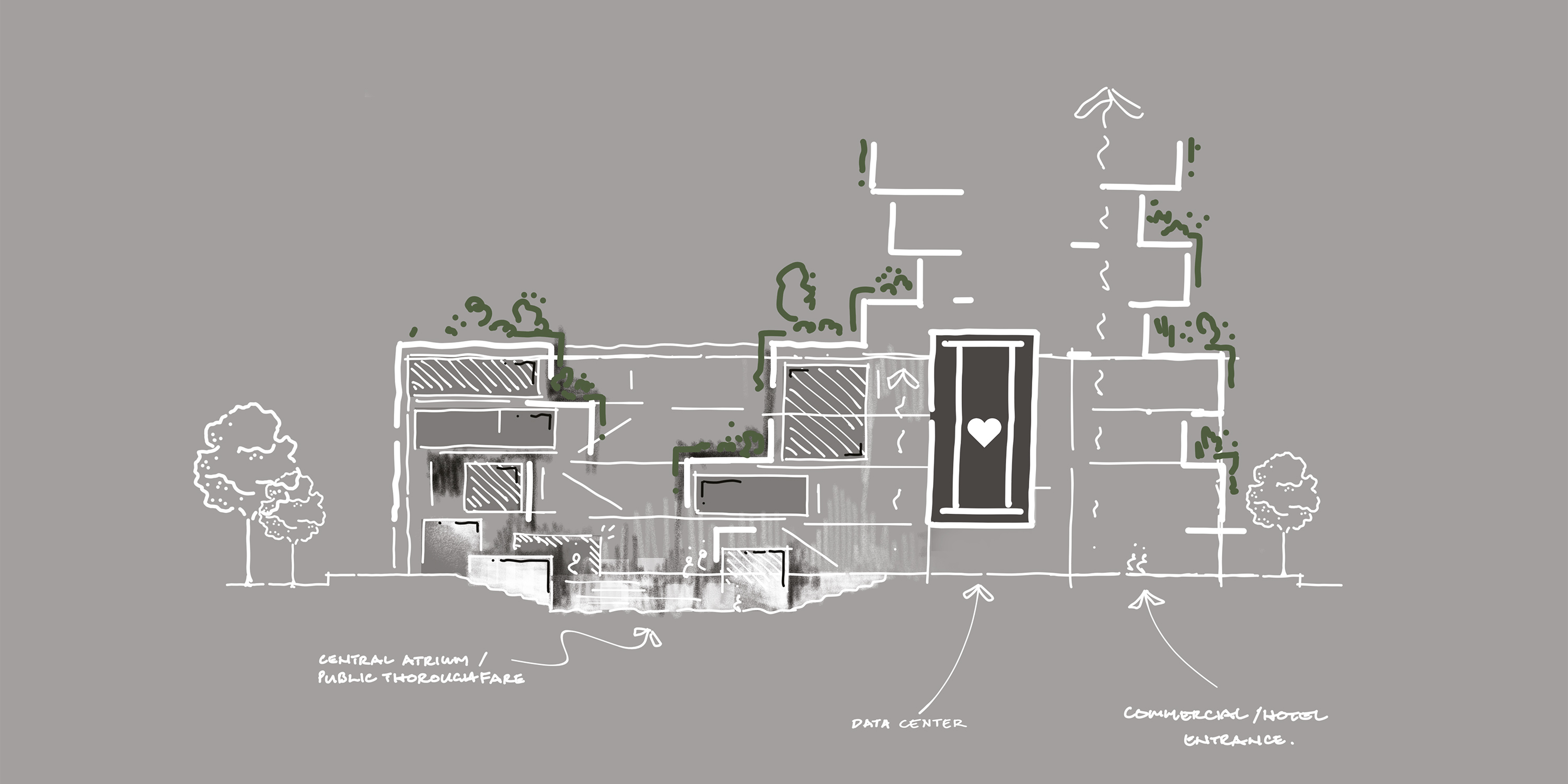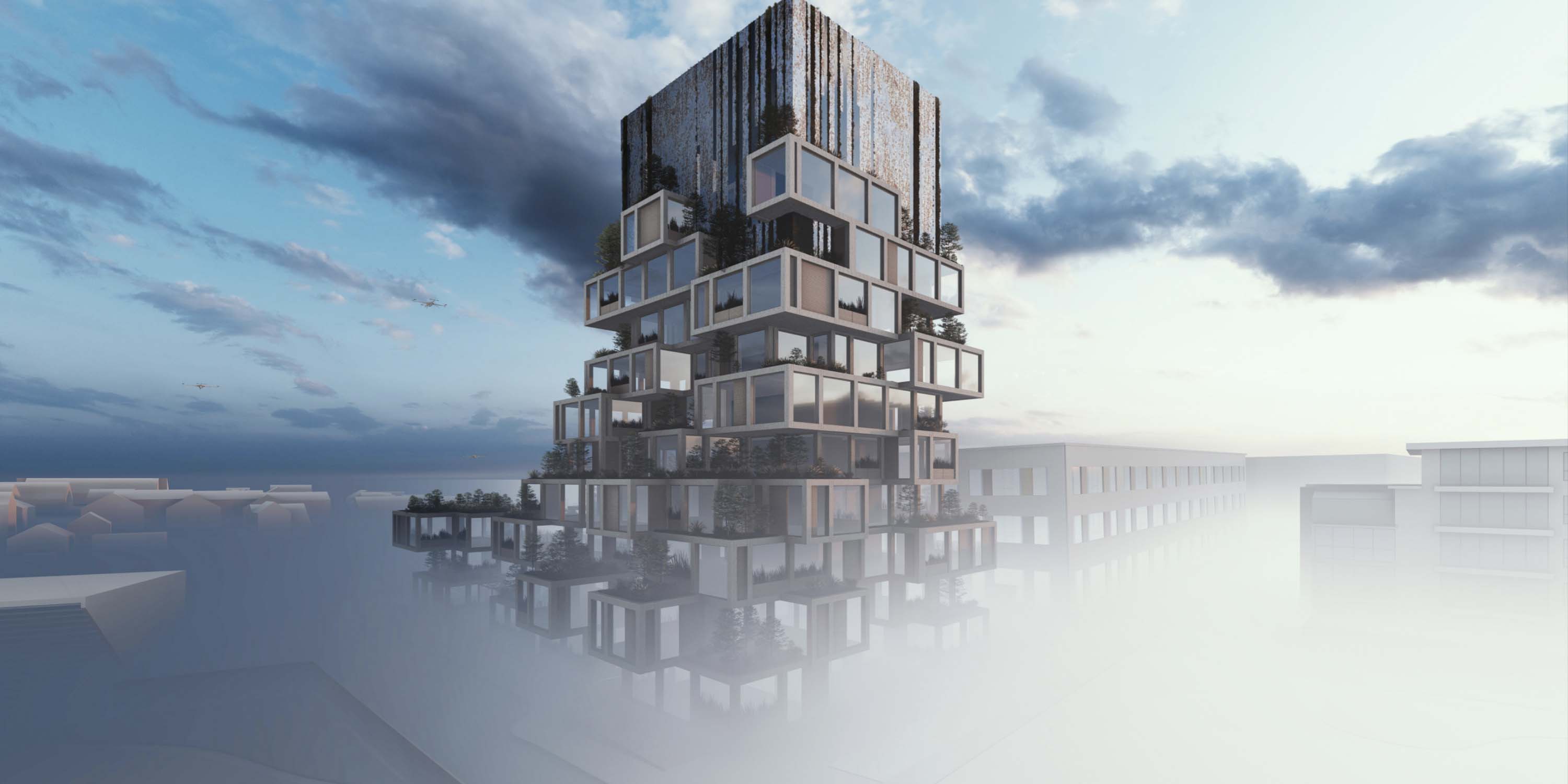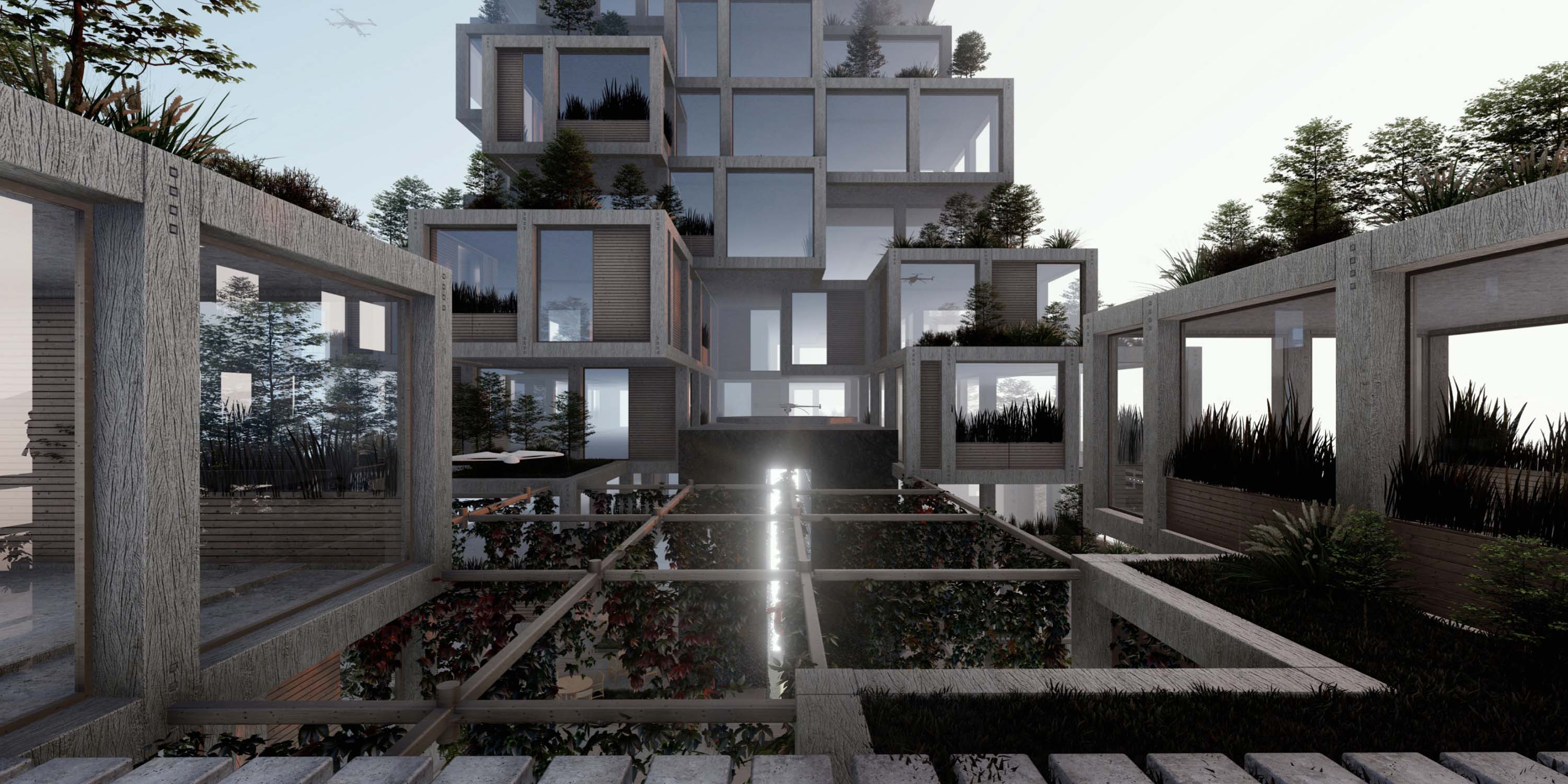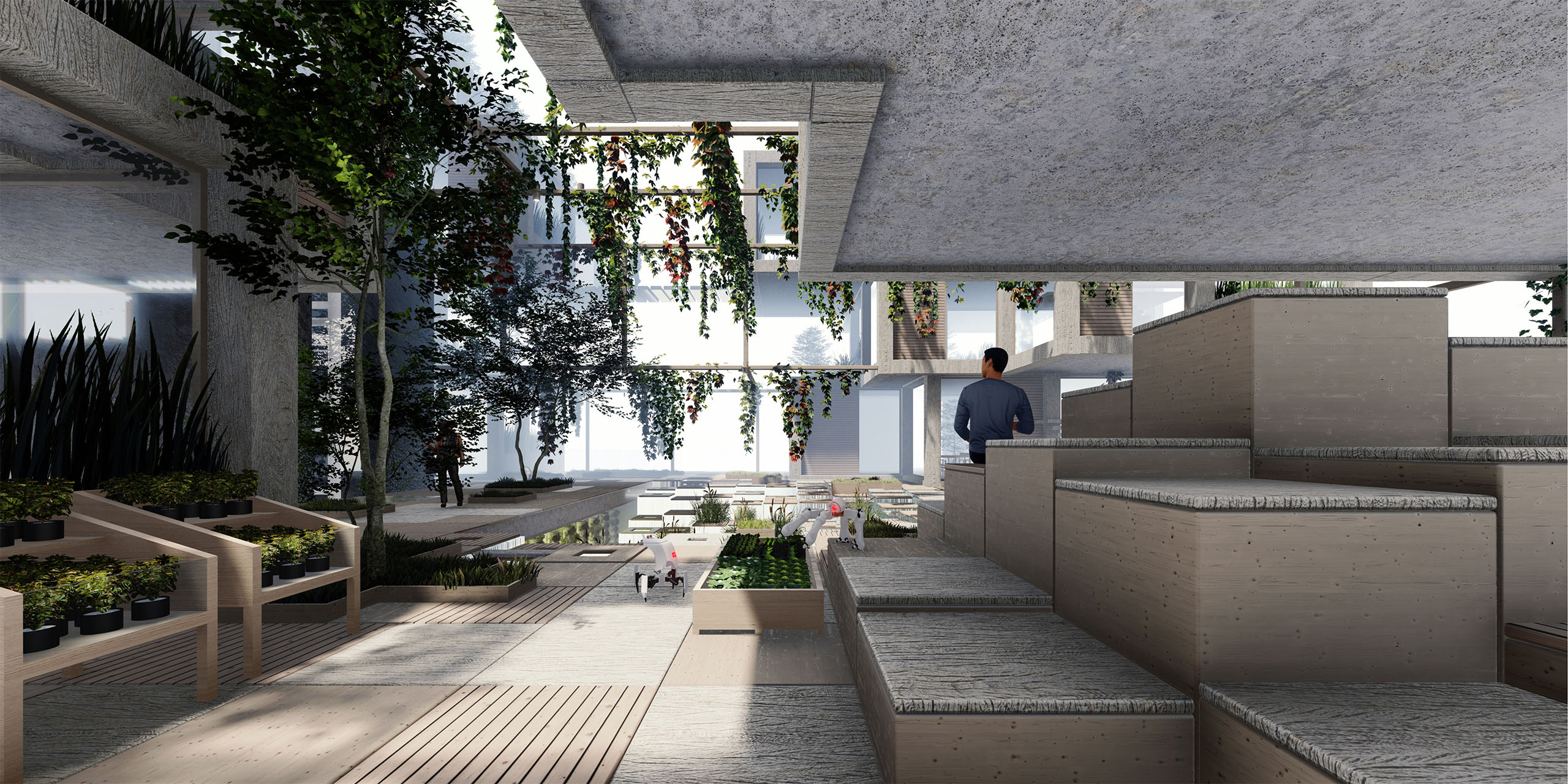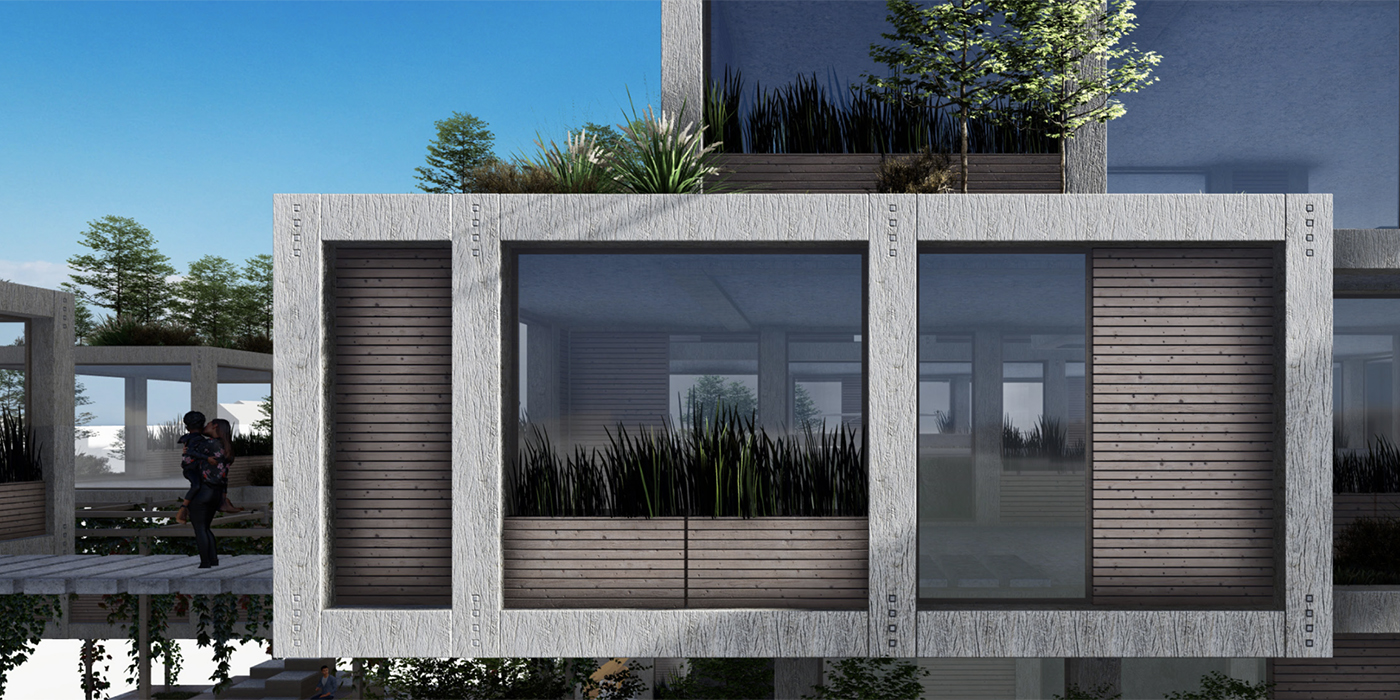
concept
KATRINA URBANIK has been invited by Miris AS, a Norwegian green real estate developer, to prepare a design proposition for the development located in Bryne. The investment is located in the center of Bryne, situated between the school and the city stadium. It has the character of a high tech vertical ecosystem with growing environment, powered by our iLOOP platform, specially created closed eco system, supported by IBrain and IFlow platforms all developed by KATRINA URBANIK. The building is supported by drones and small and large scale service robots.
The project proposes a timber high rise in hearth of Bryne combining public services and cultural programs, apartments, coo working areas, restaurants, cafes and hotel with the technical and legislative processes of a successful land claim for the expansion of indigenous territory. The timber tower stands in direct dialogue with the steel and glass structures of Bryne, offering a contemporary interpretation of the traditional totems and wooden architecture around, making a clear statement about the ambitions of the region’s tribes.
social sustainability
Following a synthesis of research into Norwegian art, architecture and anthropological history with contemporary developments in indigenous land claims, the project speculates on the expansion of the hearth of the city. Recognizing opportunity within the relationship between historic land claims and the economic growth seen in real estate markets in Norway. At the heart of the project is the concept of social sustainability as the building is concerned with the protection and growth of the indigenous culture of Bryne, offering spaces to learn about technology, sustainability, art and culture as well as providing the necessary commercial activities to sustain the surrounding tribal economies.
structure
The structure is inherently efficient as the form tapers in response increased wind loads with height, whilst a stepping qubic forms ensures the floors are still usable to the top. Studies into the structural properties of tree and existing high-rise typologies arrived at a system of abutting Bryne higher buildings, and a proportional system was devised to develop an optimized and aesthetically cohesive cubic structure. The right angels of cubes, ensuring that height is achieved with an efficient system of splices and floor connections.
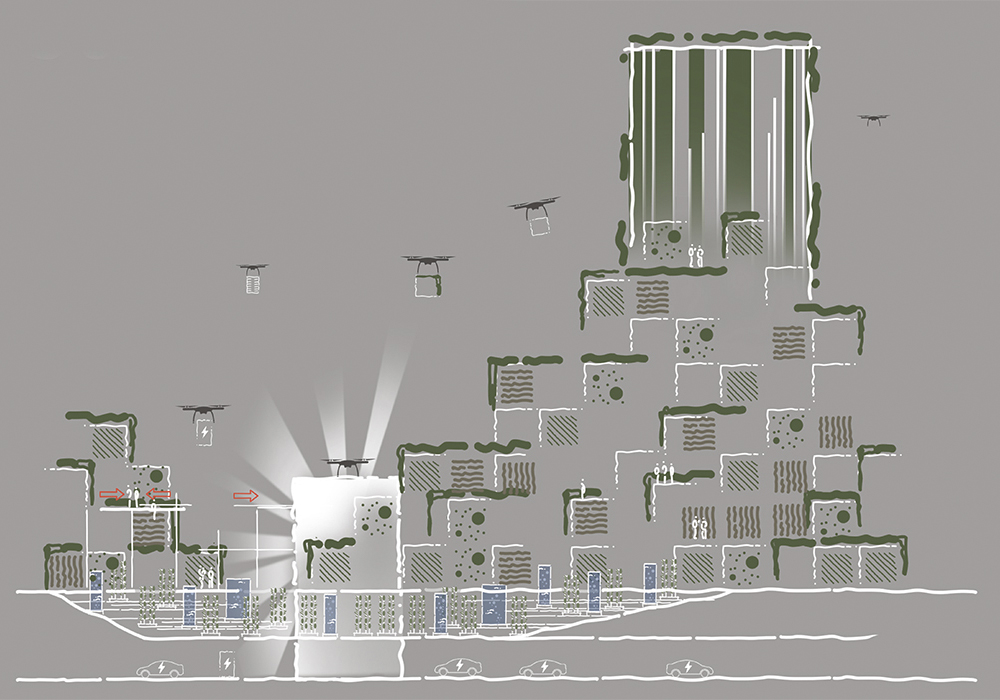
material and environment
Decisions on materiality were made on a basis of cultural and environmental research, as natural Norwegian spruce wood was an important material to apply in the project for the environmental performance, both in resistance to destructive weathering and the reduction in embodied carbon. A system of timber louvers vary in depth across the facade to mitigate solar gains, the same elements increase in density to create the protective balustrades of the terraces, and open out to offer views from the intermediate terraces. Environmental design principles are observed at every opportunity with the integration of water reclamation and deep geothermal power, capitalizing on the wet climate and the geologic characteristics of the region.

